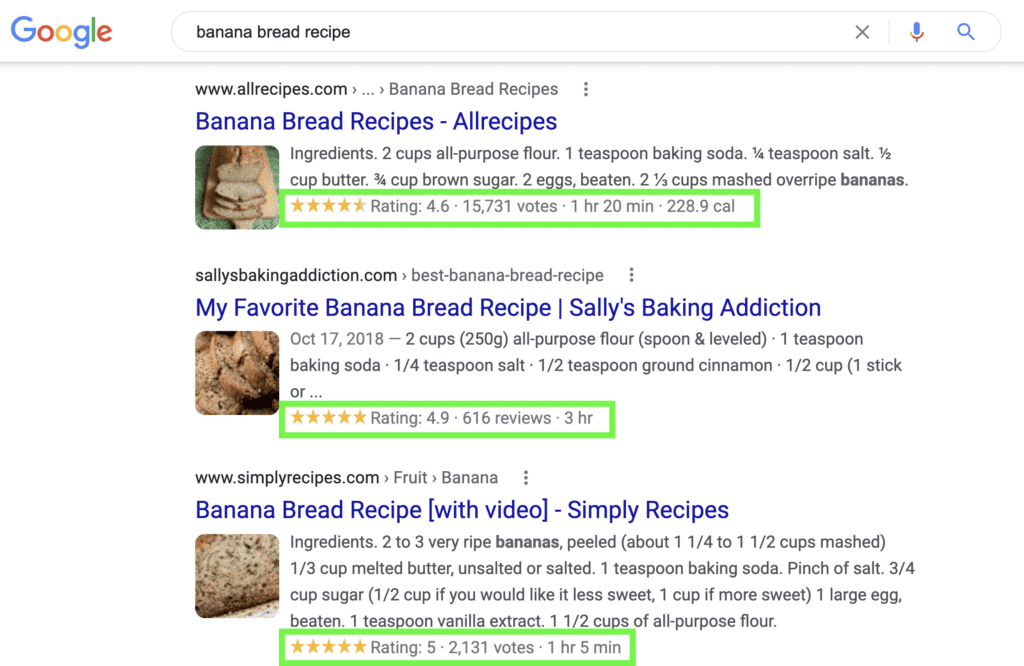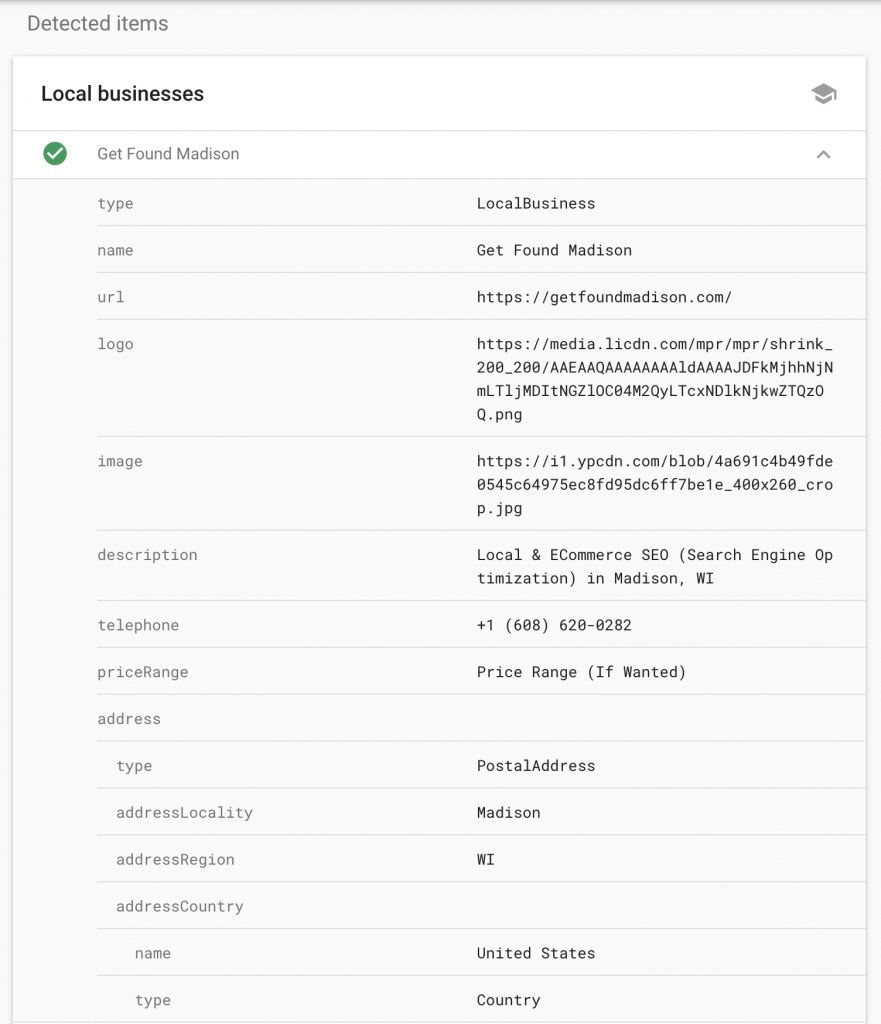What is Structured Data markup?
Structured Data markup is a way of telling search engines more about the content on your website.
Google and Bing’s crawlers index millions of pages on the web daily, first by crawling the HTML and exploring links across the web, then indexing the data they find for web searchers just like you and me.
For example, if you create a basic webpage that includes your local business address, search engine crawlers may crawl and index that information without registering that it’s your business address specifically. There may have been other ways to infer that anyway if your business name, address and phone number (the holy NAP of local SEO!) are standard across web directories and citations, but by adding additional HTML tags, you can tell Google and Bing explicitly, “This is my address, so take note and index it as such!”
In some cases, Google shows “rich” results on the results page based on this additional information it gleaned from structured data. Here are some examples from more national Google searches.
So how do you feed Google additional information like this in a format it understands?
Option 1: Schema Markup
Even if you don’t know HTML, bear with me a moment and look at these two ways of displaying address information to search engines
<p>Candy on Main Street 123 Main St Madison, WI 53703</p>
<p itemscope itemtype="http://schema.org/LocalBusiness"><span itemprop="name">Candy on Main Street</span> <span itemprop="address" itemscope itemtype="http://schema.org/PostalAddress"> <span itemprop="streetAddress">123 Main St</span> <span itemprop="addressLocality">Madison</span>,<span itemprop="addressRegion">WI</span> <span itemprop="postalCode">53703</span></p>
Yikes, okay that looks hideous to a human reader, but it’s crystal clear to a search engine. And notice how if you read through the second snippet of code, you can see the same business name, address, and zip embedded in the HTML next to tags like
itemprop="name" itemprop="address" itemprop="postalCode"
Option 2: Use a WordPress Plug-In
If you’re not on WordPress but can add HTML to your website, we recommend using Google’s Structured Data Markup Helper tool. Dig it, because this lets you open up your site, highlight the text you want to markup, then tells you what HTML to add to your site.
If your site is on WordPress, there are plugins that can do this for you. We use this RankYa plug-in for Get Found Madison’s website. Yoast has one, too, but it’s premium so it costs some money.
Once you’ve added it, you can test it out using Google’s Rich Results testing tool.
Here’s what our homepage shows when you plug it into this tool:
Something cool about the RankYa WordPress plug-in is that you can feed search engines information that human visitors to your site don’t see. Our footer doesn’t include postal address, hours, or country, yet all that information is being sent.
Note that the types of local business data you can mark up go way beyond just basic contact info. You can tell Google and Bing that content on your site is an example of the following (for starters):
- hours
- locations
- events
- employees
- reviews
But honesty, that’s a lot of HTML that can be hard to mark up, including with WordPress. Isn’t there an easier way?
Option 3: JSON-LD, or JavaScript in the background
We’ll be the first to tell you that finding the information on your webpages and setting the correct “itemprop” attributes in code is a huge pain.
Luckily, Google understands a form of JavaScript that can just be added in the background of a page’s code. It’s called JSON-LD.
Here’s what the same structured data from above would look like in this kind of code:
Feel free to copy and adapt from this template here.
What do Schema markup and rich snippets do for my SEO?
From what we know, Schema isn’t technically an SEO ranking factor on Google.
That said, this falls under the same category at meta descriptions: it hasn’t been proven to boost your rank directly, but the rich snippets search engines sometimes display on their result pages can help increase click-through to your site. Click-through rate (CTR) can affect SEO rank, so think of meta descriptions and schema rich snippet markup as indirect factors.
Plus, you want Google to match up your Name, Address and Phone number (NAP) style information across the web, from your site to Google My Business, to Yelp, to other directories. You should be one entity with the same NAP “fingerprint” to rank well.
Many people want their Google review stars to show up under their SEO title and URL like you sometimes see on national sites. Unfortunately, we have not found a reliable way to do this, even when we mark up reviews on our client’s pages. More information about this here.
If you could clarify your information to Google and win more clicks to your site, wouldn’t you? Rich data markup is one more tool in the toolbox. Turn to it once your basic onsite SEO is in order.






